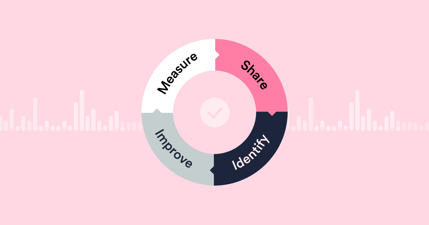We’re all looking for ways to continually improve our business outcomes and results, but there are so many possible options and so much information available to us that it can be confusing. We need to choose our targets for improvement carefully so that we stay within our budget and still make a positive difference. Sometimes we can be confused because we’re not looking in the right place. We might be looking at numbers that don’t tell the important part of the story.
The important part (of the story) is the part that directly affects – either for better or for worse – the people who make up the organization. We employ people to accomplish work, and both the quality and efficiency of that work produce added value for our customers. The value, in turn, produces the revenue we take in.
This blog explains why experience data is essential for successful continual improvement.
The largest room in the world is room for improvement. – Diane Lane, actress
Focusing improvement efforts on “the right things”
How are you helping employees accomplish the work they’re doing? What can you do to help them complete their tasks more efficiently, faster, and with fewer interruptions and as little added effort as possible, and how can you keep improving over the long term?
In a recent IDC survey of line-of-business (LOB) and IT leaders, 85% of respondents agreed that an improved employee experience and higher employee engagement translate to better customer experience, higher customer satisfaction, and higher revenue for their organization. - IDC, January 2022
What kind of feedback data is the best to help assess your improvement?
It’s feedback from the people your improvement efforts affect the most. Feedback from end-users allows us to make informed decisions and adjustments as we get ready to take the next step. We can see whether our time, resources, and effort are being spent on the right things.
This all proceeds from understanding that the purpose of IT is to help people be productive, collaborative, and innovative, and that they’re happier when they’re able to be productive without being interrupted by technical issues, and when they don’t have to exert unnecessary effort to get on with their real work. This is what we mean when we talk about IT end-user experience data.
Ideally, the type of data you need to gather, review, and act upon is:
- Positive or negative reaction to specific areas of the relationship of IT to end-users
- As close to real-time as possible
- Able to be scored for trending.
But this is the ideal state. As per the adapted Chinese proverb, “A journey of a thousand miles begins with a single step.” So simply starting to collect actionable experience feedback is a good start.
What happens when you have this experience data?
Let’s say you’re working with a line of business to plan for improvements, and you need to decide where and how to apply the limited budget you’re allowed. You can go to that business owner or manager and say:
“You have these 1,000 people around your department. We’ve gathered feedback from them over the past months. Because of that feedback, we know that the applications they use are, from their perspective, not performing very well, so it’s the performance of the applications we should be improving. They’re very happy with the support services at most times of the year, but they aren't happy at the end of June because that is the time when you’re cleaning your database. And so we propose that we would focus on these things: Application performance and support during data maintenance. Do you agree?”
And then you can discuss the budget, as well as when and how to fix those issues. Now your improvement plan consists of working on the parts and pieces in sync with the line of business and based on experience data.
Six months later, we can say, “Now we have 10,000 feedback data points from your end-users.” CIOs will be interested to hear what the employees are saying about their services and in understanding the feedback because that is precisely the discussion they’re having with the lines of business. Now, considering the experience data we’ve gathered, we can ask:
- Did we focus on the right things?
- Did we succeed in making the improvements people wanted?
- Are they happier now, with the desired level of productivity?
- Are we headed in the right direction?
IT is able to show its value by improving exactly the services and technologies that are making a difference to the people who are using them and having a positive impact on productivity for the organization.
Experience data will enable and improve your organization’s continual improvement activities, whether it’s just starting out with experience management or whether it’s been doing it for years.




